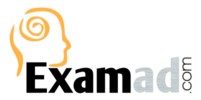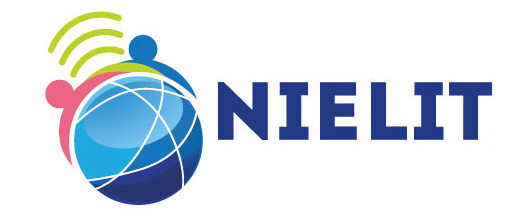NIELIT Scientific Assistant Syllabus | Scientist B Syllabus
National Institute of Electronics and Information Technology (NIELIT) invited applications for posts of Scientific Assistant and Scientist B. There are total 340 posts out of which 259 for Scientific Assistant and 81 for Scientist B. It is golden opportunity for students to get Government Jobs in National Informatics Centre NIC. Here we providing you detailed NIELIT Scientific Assistant Syllabus | Scientist B Syllabus for exam. This Exam is for 120 marks. Syllabus for Scientific Assistant and Scientist B is same and exam pattern is also same. You must know correct syllabus for exam. Go through NIELIT Scientific Assistant Syllabus | Scientist B Syllabus and analyze it.
Lets look at Exam Pattern for NIELIT Scientific Assistant and Scientist B. Exam is for total 120 marks. There are two sections in paper, each for 60 marks. There is negative marking of 0.25 marks for each wrong answer. For Scientist B post candidates will be selected based on exam and interview. There is no interview for Scientific Assistant. NIELIT Scientific Assistant Syllabus | Scientist B Syllabus for each section given below.
NIELIT Scientific Assistant Syllabus | Scientist B Syllabus
Section 1 : General Paper
General Awareness :
- Indian Constitution.
- Science – Inventions & Discoveries.
- History.
- Budget and Five Year Plans.
- Geography.
- Important Financial & Economic News.
- Economy.
- Scientific Research.
- Culture.
- India and its neighboring countries.
- Sports.
- Knowledge of Current Events.
- General Politics.
- Current Affairs – National & International.
- Economy, Banking, and Finance.
- Countries & Capitals. etc.
This is NIELIT Scientific Assistant Syllabus | Scientist B Syllabus for General Awareness.
CHECK BEST BOOKS FOR NIELIT SCIENTIFIC ASSISTANT / SCIENTIST B
Quantitative & Qualitative Ability Syllabus
- Number Systems.
- LCM and HCF.
- Percentages.
- Profit, Loss, and Discount.
- Interest (Simple and Compound).
- Speed, Time and Distance.
- Time and Work.
- Averages.
- Ratio and Proportion.
- Linear Equations.
- Quadratic Equations.
- Complex Numbers.
- Logarithm.
- Progressions (Sequences & Series).
- Binomial Theorem.
- Surds and Indices.
- Inequalities.
- Permutation and Combination.
- Probability.
- Functions.
- Set Theory.
- Mixtures and Allegations.
- Geometry.
- Coordinate Geometry.
- Trigonometry.
- Mensuration.
- Data Interpretation.
- Problem Solving.
- Data Sufficiency.
- Arithmetic.
- Modern Maths.
- Geometry.
- Algebra.
- Number Systems.
This is NIELIT Scientific Assistant Syllabus | Scientist B Syllabus for Quantitative & Qualitative Ability.
Logical and Analytical Reasoning
- Arrangements.
- Family Tree.
- Numerical grid.
- Coding.
- Series.
- Verbal reasoning on the topic of Statement-Conclusion, Syllogisms & Critical Reasoning.
This is NIELIT Scientific Assistant Syllabus | Scientist B Syllabus for Logical and Analytical Reasoning
CHECK BEST BOOKS FOR NIELIT SCIENTIFIC ASSISTANT / SCIENTIST B
Section 2 : Computer Engineering / Computer Science
NIELIT Scientific Assistant Syllabus | Scientist B Syllabus for Section 2 given below.
Engineering Mathematics
- Mathematical Logic: Propositional Logic; First Order Logic:
Probability: Conditional Probability; Mean, Median, Mode and Standard Deviation; Random
Variables; Distributions; uniforms, normal, exponential, Poisson, Binomial.
Set Theory & Algebra: Sets, Relations, Functions, Groups, Partial Orders, Lattice, Boolean
Algebra. - Combinatorics: Permutations, Combinations, Counting, Summation, generating functions,
recurrence relations, asymptotics. - Graph Theory: Connectivity, spanning trees, Cut vertices & edges, covering, matching,
independent sets, Colouring, Planarity, Isomorphism. - Linear Algebra: Algebra of Matrices, determinants, systems of linear equations, Eigen values
and Eigen vectors. - Numerical Methods: LU decomposition for systems of linear equations, numerical solutions of
non-linear algebraic equations by Secant, Bisection and Newton-Raphson Methods; Numerical
integration by trapezoidal and Simpson’s rules. - Calculus: Limit, Continuity & differentiability, Mean value Theorems, Theorems of integral
calculus, evaluation of definite & improper integrals, Partial derivatives, Total derivatives,
Maxima & Minima.
This is NIELIT Scientific Assistant Syllabus | Scientist B Syllabus for Engineering Mathematics

Click here to see best deals in AMAZON GREAT INDIAN SALE
Computer Science/ Computer Engg
- Digital Logic : Logic functions, Minimization, Design and synthesis of combinational and
sequential circuits, Number representation and computer arithmetic (fixed and floating point).
Computer Organization and Architecture: Machine instructions and addressing modes, ALU
and data-path, CPU control design, Memory interface, I/O interface (Interrupt and DMA mode),
Instruction pipelining, Cache and main memory, Secondary storage. - Analog and Digital Communication : Autocorrelation and power spectral density, properties of
white noise, filtering of random signals through LTI systems, amplitude modulation and demodulation, angle modulation and demodulation, spectra of AM and FM, Super heterodyne
receivers, circuits for analog communications, Information theory, entropy, mutual information and
channel capacity theorem, Digital communications, PCM, DPCM, digital modulation schemes,
amplitude, phase and frequency shift keying (ASK, PSK, FSK), QAM, MAP and ML decoding,
matched filter receiver, calculation of bandwidth, SNR and BER for digital modulation; Fundamentals
of error correction, Hamming codes; Timing and frequency synchronization, inter- symbol
interference and its mitigation; Basics of TDMA, FDMA and CDMA. - Programming and Data Structures : Programming in C, Functions, Recursion, Parameter
passing, Scope, Binding, Abstract data types Arrays, Stacks, Queues, Linked Lists, Trees, Binary
search trees, Binary heaps, Object Oriented Programming Concepts- Object, Class, Inheritance,
Polymorphism, Abstraction and Encapsulation. - Algorithms : Analysis, Asymptotic, notation, Notions of space and time complexity, Worst and
average case analysis, Design; Greedy approach, Dynamic programming, Divide-and-conquer, Tree
and graph traversals, Connected competent, Spanning trees, Shortest paths; Hashing, Sorting,
Searching, Asymptotic analysis (best, worst, average cases) of time and space, upper and lower
bounds, Basic concept of complexity classes –P, NP, NP-hard, NP-complete. - Theory of Computation : Regular languages and finite automata, Context free languages and
Push-down automata, Recursively enumerable sets and Turing machines, Undecidability.
Compiler Design: Lexical analysis, Parsing, Syntax directed translation, Runtime environments,
Intermediate and target code generation, Basics of code optimization. - Operating System : Processes, Threads, Inter-Process communication, Concurrency,
Synchronization, Deadlock, CPU scheduling, Memory management and virtual memory, File systems,
I/O systems, Protection and security, - Databases : ER-model, Relational Model (relational algebra, tuple calculus), Database design
(integrity constraints, normal forms), Query languages (SQL), File structures (sequential files,
indexing, B and B+ trees), Transactions and concurrency control.
Information Systems and Software Engineering: Information gathering, requirement and feasibility
analysis, data flow diagrams, process specifications, input/output design, process life cycle, planning
and managing the project, design, coding, testing, implementation, maintenance. - Computer Networks : ISO/OSI stack, LAN technologies, Flow and error control techniques, Routing
algorithms, Congestion control, TCP/UDP and sockets, IP(v4), IP(v6), Application layer protocols,
(ICMP, DNS, SMTP, POP, FTP, HTTP), Basic concepts of hubs, switches, gateways, and routers.
Wireless technologies, Network security – basic concepts of public key and private key
cryptography, digital signature, firewalls.
This is NIELIT Scientific Assistant Syllabus | Scientist B Syllabus for Computer Engineering / computer Science
CHECK BEST BOOKS FOR NIELIT SCIENTIFIC ASSISTANT / SCIENTIST B


Sir,what is eligibility criteria for this exam?